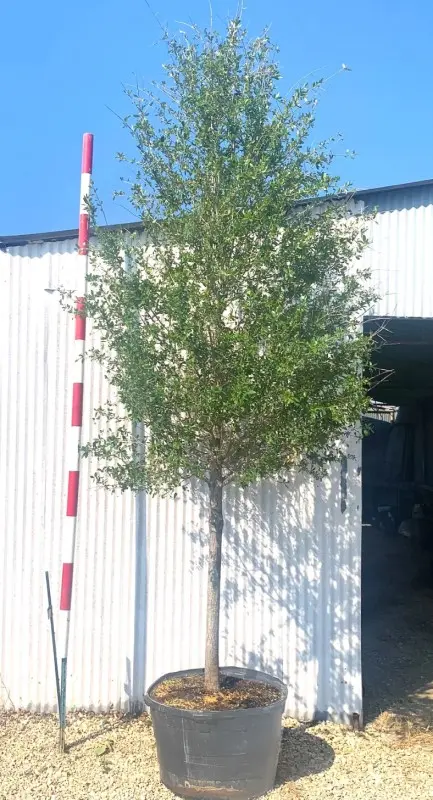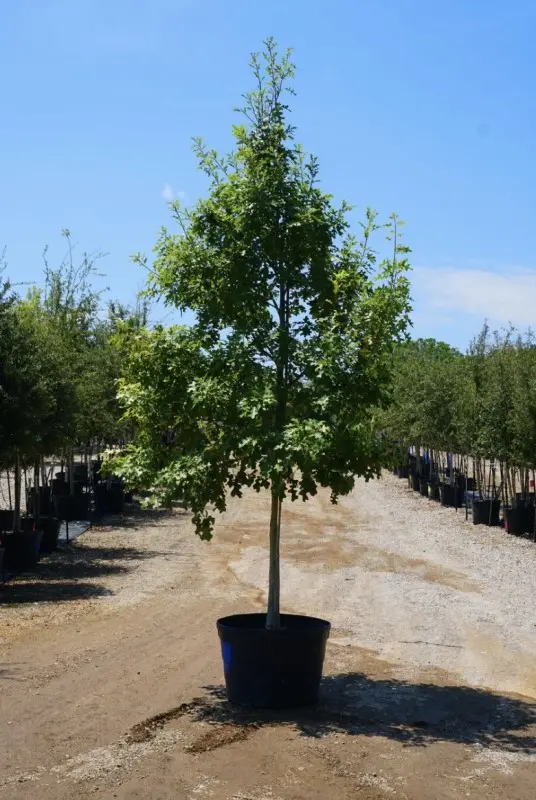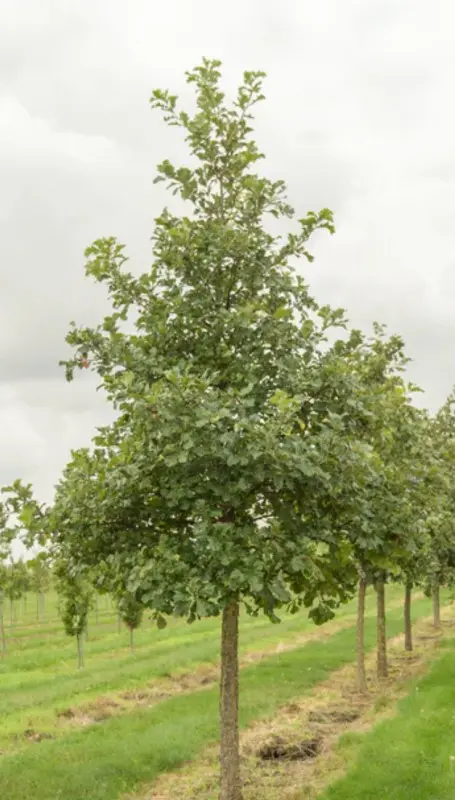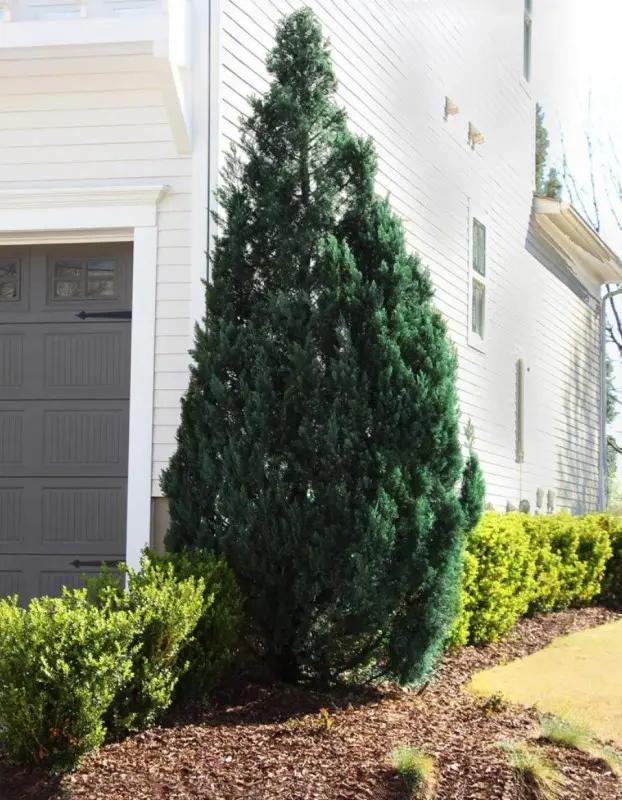-

Live Oak
$0.00
Evergreen
Grow up to 24" per year
Up to 70'
-
Live Oak (Quercus virginiana), also known as Southern Live Oak, is an iconic, evergreen oak tree admired for its sprawling, majestic form and resilience in a variety of landscapes. Native to the southeastern United States, this tree features dark, glossy green leaves that are oblong and leathery, remaining on the tree year-round. Its branches spread wide and low, often creating a canopy much wider than the tree’s height, which can reach 40 to 80 feet tall and spread up to 100 feet or more. The gnarled, sprawling limbs of the Live Oak make it especially striking, creating a dramatic, ancient appearance in mature trees.
Thriving in USDA zones 7-10, Live Oak prefers full sun and can adapt to various well-draining soil types, including sandy, clay, and loamy soils. Known for its durability, this tree is highly tolerant of drought, salt, and even occasional flooding, making it suitable for both coastal and inland landscapes. Once established, Live Oak requires minimal watering, making it an excellent choice for low-maintenance or xeriscape gardens in warmer climates.
Low-maintenance and long-lived, Live Oaks require little pruning except to remove dead or crossing branches. Their dense, spreading canopy makes them popular shade trees in parks, large residential landscapes, and historical sites. The tree also supports an array of wildlife, providing habitat and food for various species, including birds and squirrels. With their timeless appeal, dense canopy, and robust adaptability, Live Oaks bring beauty, shade, and ecological value to the landscape, becoming a cherished feature for generations.
-

Red Oak
$0.00
Deciduous (loose leaves in winter)
Grow up to 24" per year
Up to 70'
-
Red Oak (Quercus rubra), also known as Northern Red Oak, is a majestic deciduous tree celebrated for its vibrant red to reddish-brown foliage in the fall and its strong, broad-spreading canopy. Native to North America, Red Oak has a straight trunk and dark gray bark with distinctive, shiny ridges. In spring, the tree produces small, yellowish-green catkins, while its large, lobed leaves turn to brilliant shades of red in autumn, making it a standout in any landscape.
Red Oaks typically reach heights of 60 to 75 feet with a similar spread, creating a generous canopy that offers ample shade. They thrive in USDA zones 4-8, preferring full sun and well-draining soil with a slightly acidic to neutral pH. Red Oak trees are adaptable to various soil types, including sandy, clay, and loamy soils, and are moderately drought-tolerant once established. Their rapid growth rate and long lifespan make them ideal shade trees for parks, large residential properties, and open landscapes.
Low-maintenance and hardy, Red Oaks require minimal pruning aside from removing dead or damaged branches in late winter. They are generally resistant to pests and diseases, though young trees may benefit from mulching and occasional watering during dry spells. With their stunning fall color, dense canopy, and robust form, Red Oaks are favored for adding structure, shade, and seasonal interest to landscapes, contributing both ecological and aesthetic value for generations.
-

Willow Tree
$0.00
Deciduous (loose leaves in winter)
Grown up to 24" per year
Up to 50'
-
Willow Tree (Salix spp.), especially well-known in its Weeping Willow variety (Salix babylonica), is a graceful, deciduous tree admired for its long, cascading branches, slender leaves, and serene presence in landscapes. Native to various regions around the world, Willows are typically found near water sources, as they thrive in moist, well-draining soils. The weeping branches of the Willow create a soft, flowing effect, with narrow, light green leaves that turn yellow in the fall, adding seasonal beauty to the tree’s delicate silhouette.
Willows typically grow between 30 to 50 feet in height with a similar spread, creating a broad, rounded canopy that provides ample shade. They thrive in USDA zones 4-9 and prefer full sun to partial shade. Known for their fast growth, Willow trees are often planted near ponds, streams, or other water features, where they add both aesthetic and ecological value by stabilizing soil and providing habitat for various wildlife species. They can tolerate various soil types but are especially suited to wet areas where other trees may struggle.
Low-maintenance overall, Willows may need occasional pruning to remove deadwood and maintain a healthy shape, especially if grown near walkways or structures, as their branches can grow low to the ground. Due to their extensive root systems, they should be planted away from foundations, water pipes, and septic systems. With their iconic weeping form, soothing presence, and adaptability to wet soils, Willow Trees are popular choices for creating tranquil, natural-looking landscapes, offering shade, beauty, and ecological benefits to a variety of settings.
-

White Oak
$0.00
Deciduous (loose leaves in winter)
Grown up to 12" per year
Up to 70'
-
White Oak (Quercus alba) is a majestic, long-lived deciduous tree known for its stately form, broad canopy, and vibrant fall color. Native to eastern North America, White Oak is celebrated for its strong wood, attractive bark, and adaptability to a range of environments. It typically has large, deeply lobed leaves that emerge a light green in spring, mature to a dark blue-green in summer, and turn stunning shades of red, bronze, and burgundy in the fall. The tree’s bark is a light, ashy gray with a slightly scaly texture, adding a distinguished look year-round.
White Oaks can reach heights of 60 to 80 feet with a similar spread, forming a rounded, dense canopy that provides ample shade. They thrive in USDA zones 3-9 and prefer full sun, performing best in well-draining, slightly acidic to neutral soils. White Oaks are moderately tolerant of drought once established and can adapt to various soil types, though they are best suited to loamy or sandy soils in natural woodland or open landscapes.
With minimal maintenance needs, White Oaks are generally pest- and disease-resistant, though young trees benefit from mulching and occasional watering during dry periods. They require little pruning beyond removing dead or damaged wood. White Oaks produce acorns that serve as a valuable food source for wildlife, including squirrels, deer, and birds, enhancing biodiversity in the landscape. With its iconic presence, seasonal beauty, and ecological value, the White Oak is a timeless choice for large properties, parks, and rural landscapes, bringing structure, shade, and natural beauty to the environment for centuries.






